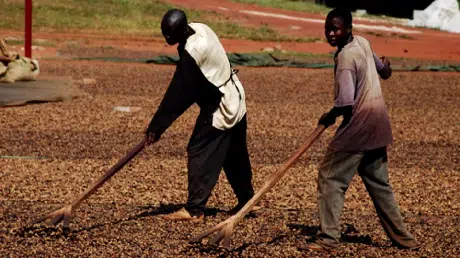
A US startup is seeking funds for a service that tracks produce all the way from farm to supermarket shelf, ultimately letting consumers tap a tag on a bag of coffee to see the farm on which it was grown and trace its journey.
Dauntless Software uses NFC phones and tags to track a farmer’s produce and is seeking US$50,000 on Indiegogo to run a pilot in Washington State in the US, before introducing it to cocoa farms on Africa’s west coast six months later.
Farmers will be able to attach plastic NFC tags to their cocoa bags that are then used to identify the farmer and to keep track of the product from harvesting to processing.
The process could help to ensure harvests are valued properly, and farmers are paid a fair price for their crop.
Since some third world farmers have little to no education, the field application will present information through pictogram and audio clues.
A video produced by the team shows how the service will work:
“Our system is designed so it can track from the farm all the way to consumption,” Clark Musser, CEO at Dauntless, tells NFC World+.
“We are concentrating most of our efforts at the moment toward the beginning of the chain rather than the end, but as the technology evolves and we begin to work more closely with the various portions of any given supply chain, the same data will become readily available to the retail outlets and ultimately the end consumer.”
For coffee farmers, for example, “if the supplier of the coffee attached one of our tags to the packaging on the shelf, the consumer would be able to tap the tag and trace the origin of the coffee back to the farms and farmers from where it came.
“We see potential in the ability for consumers to be able to make choices based on the purity of the coffee coming from single locations over mixed batches, the ability to follow a farm or farmer, or even a particular crop they really like,” he adds.
“The interfaces would be very complicated to simplify because of the way food is manufactured in large batches from hundreds of farms, but we feel that we can tackle the challenge as it becomes more of a reality and that the added value to the manufacturers and stores to charge a premium for single-source food would be interesting.
“Our current focus is on the largest gap in tracing food automatically, which is prior to it reaching the processing plants. Once we can prove our solution in that space, moving down the chain is the natural next step.”
Farmers will need a smartphone or any NFC-enabled device to add information to highly durable PVC tags, which will be attached to bags of their produce.
The technology though, according to Musser, will enable farmers to receive a fair price for their crop, despite operating in some of the world’s most dangerous territories, and enable corporations to remove power from the middlemen in the supply chain.
“Think of it in terms of where the farmers are. These are some of the most dangerous regions in the world. The farmers themselves are being paid less than a dollar a day for all the work they do,” he says.
“Part of the problem is that from the point when the farmer delivers the chocolate to the buyer, he’s not actually getting paid for what he delivers. They get paid for what makes it to the port so they are putting all the responsibility on the farmer to absorb the losses that happen because the supply chain is not secure.
“What we want to do is give the corporations that pay these supply chains the power to say ‘well we want to pay the farmer for every bag they deliver’.
“The nice thing with traceability is that if three bags disappeared between leg C and D on the trip, you know where to look for your three bags. You can start policing those areas. We have been negotiating with a couple of different agricultural companies up here in Washington State. My expectation is that we will have a pilot with them within the next 90 days with one to four different places.
“Then, once we have that done, we will move on to the next phase which is to start delivering something in third world countries, so probably 90 days to get our first pilot up and running and then probably six months until we should start seeing it spread.”
Next: Visit the NFCW Expo to find new suppliers and solutions